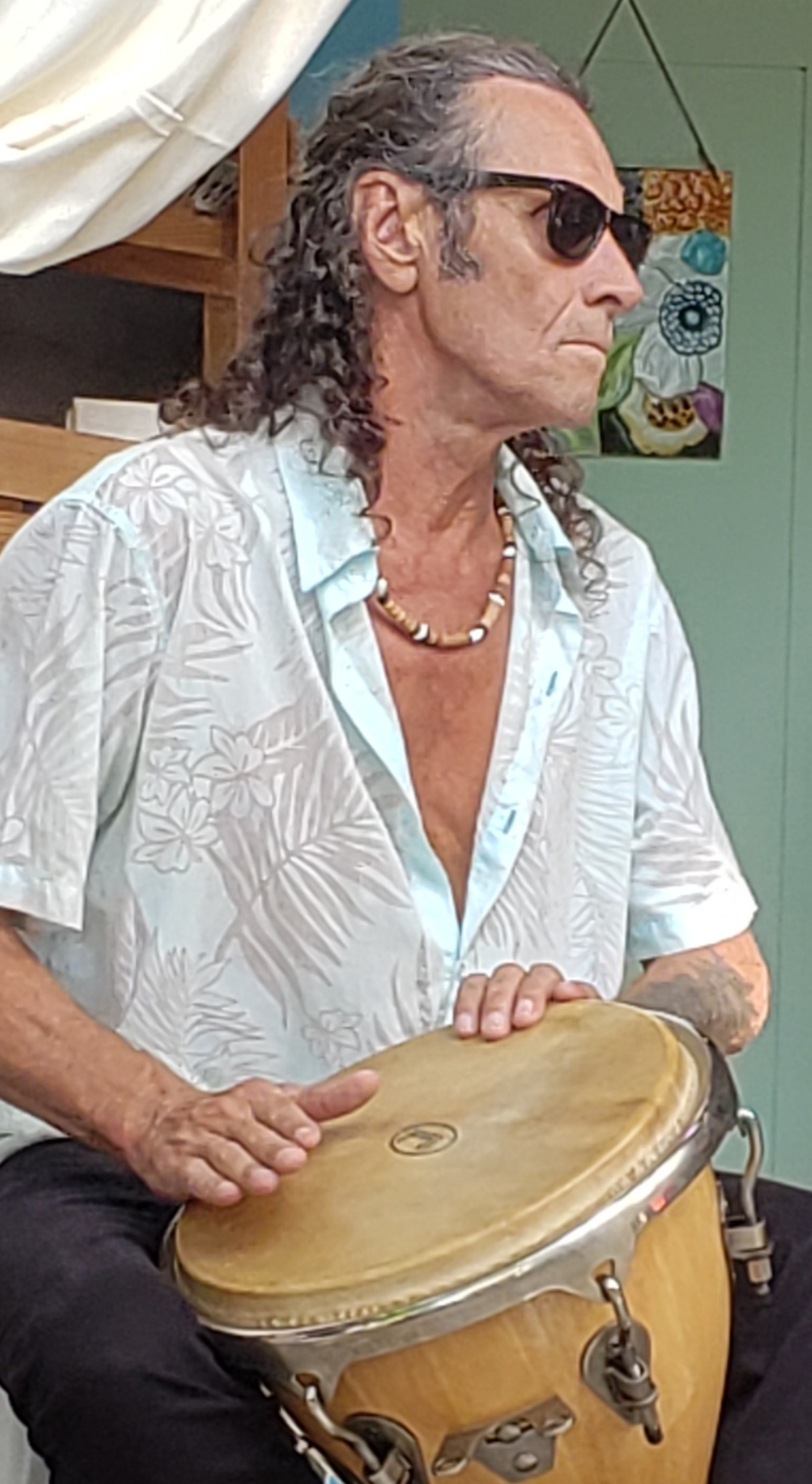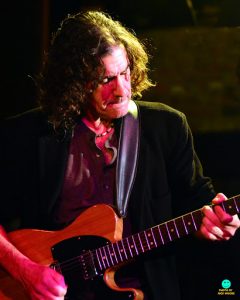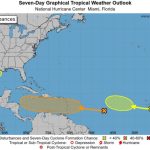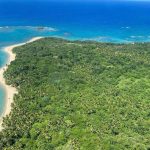They call him The Breeze and he’s recording an album of tropical blues on DR’s north coast

At 62, Bobby Breeze realizes a lifetime of blues-rock dreams with recording sessions taking place on the north coast of the DR.
Renn Loren
The Dominican Republic, like its Caribbean neighbors, is also known as a musical island. Many may be familiar with the indigenous merengue, merengue tipico, bachata, and the latest import from Puerto Rico reggaeton or its Dominican version known as dembow, which incorporates old-school reggae and reggaeton beats from mainly Jamaica, Panama, and Puerto Rico.
There is also Dominican rock, which combines British and American rock influences with a local Dominican spice.
But there is another Dominican Island music that happens when expatriates from other countries create their music in the creatively fertile contagiously influential environment of the Dominican Republic.
This series is about just such a collaboration.
I will be covering an intriguing recording session scheduled to take place in the north coast towns of Cabarete, Sosua, and Puerto Plata. These sessions will be the realization of one man’s dream, involve players and producers from Norway, New Zealand, New Orleans, Hawaii, and Canada as well as contributions from local musicians from the DR.
The artist is Bobby Breeze, and he’s bringing 62 years of a colorfully lived life filtered through the brass, leather, smoke, and whiskey instrument that is his voice to the musical table.
Although Breeze has played drums and blown harp with various bands, artists and groups through the years, he’s never made a proper recording of his many original songs.
Forty-five years of heavy physical labor combined with a vice or two, and a cardiovascular incident left Breeze contemplating his mortality. When a work-related injury of his shoulder forced him to face retiring from his former livelihood a few years back, Breeze began to consider other vocations: preferably ones that didn’t require so much heavy manual labor. Sitting around collecting disability and social security checks isn’t in his DNA.
He figured in the absence of any other distractions, why not give music full priority in his life and work at it with all the passion, effort, and discipline he’d approached his former jobs back in the professional contractor field?
Breezy’s connection with the Dominican Republic began at least ten years ago when he first came down to Lifestyles to enjoy the renowned tropical sun, sea, and leisurely ambiance of the island.
Breeze was entranced not only by the natural features of the island but also by its people, culture, and music. Ever since that first pivotal experience wth the DR, he has returned yearly, often joining local and visiting artists and acts on stages at Lifestyles and in the clubs of Puerto Plata, Cabarete, and Sosua.
On his first visit, marketing director of Lifestyles Cofresi, Eduardo Melo, asked guitarist Frank Green (and his band Mañana en la dia) to let Breeze sit-in on the Sunday Welcome Party and to date Breeze has played nearly thirty of the events.

Bobby Breeze Cabarete Beach
Breeze or “Breezy,” as they also call him, was born in Toronto, September 1957. Though there were no instruments in the home, he was introduced to music by way of the country and western records, his truck-driving family would play on weekends.
By the time he was seven-years-old, he had acquired a portable transistor AM radio. He’d buy fresh batteries with paper route money. The enchanted world of Beatles and Stones British Invasion-era pop music would come to him through the window of that speaker, and Breeze was hooked.
The combination of country, rock, and live performance planted the seed of music as a lifestyle in the back of his mind while more practical needs guided what would become his primary profession of building and construction.
Breeze’s grandmother was a half-Indian, half-Scot bootlegger, who once broke Hank Snow’s nose when the Canadian country music phenomenon tried to stop her door with his foot. She pulled the door open and popped Snow squarely on his nose.
Breeze cites his grandmother, with whom he lived until he was seven, as the most predominant influence in his life.
Somewhere around seven or eight-years-old, he would go to live with his mother and stepfather—a turbulent and unhappy period he’d prefer not to recall.
Ironically, because Breeze is no kind of axeman, his first instrument was a Sears Silvertone guitar on which he learned the bass notes to “House of the Rising Sun.”
His guitar skills didn’t progress much beyond that, and not long after, having failed to land a position on drums in the school band, Breeze found himself saddled with the tuba. He soldiered on with the cumbersome horn learning the A&W Root Beer song, which he’d play on every song regardless of what anyone else was playing.
One afternoon the overly-large instrument dragged him–and a friend over the edge of some stairs. He abandoned the giant horn for another try at the drums.
Breeze would tap out the cowbell part of the Stones’ “Honky Tonk Woman” on the school’s drum set, and the teacher encouraged the promising pupil to keep practicing the full kit. He did.
Sometime around 1974 at age 17, Breeze met a group of US musicians who had decided not to take part in the Vietnam conflict—which intrigued him—and ended up working as a roadie for them and living in the mansion they had rented as a band house. They built a bar in the basement and would sometimes jam all night long with Breezy on the drums. Sometimes their drummer wouldn’t show up for gigs, and that was Breezy’s opportunity to sit-in on the drums professionally. The older musicians were virtuoso’s, and Jay Thomas, the no-nonsense bass-player, pushed Breezy to become better quickly. The two remained friends for life.
Breeze had been singing in school and church choirs from an early age. The good-natured teasing and not-so-good-natured resistance of Breezy’s family to his musical pursuits pushed him to be better and to succeed at them, which he did. But the call of a steady paycheck resulted in Breeze choosing to join the professional workforce and relegate his musical ambitions to one of three jobs—a habit he would continue throughout his life.
While driving night shift taxi in 1979, Breezy began to play harmonica to pass the time. He got pretty good at the instrument.
Breeze began to go up on stage at open mics and jams. One of the more well-established rock and rollers in town got Breezy up on stage with his harmonica and encouraged him to play and sing.
Breeze formed the Earthshakers after leaving a hard rock originals band named Cageless, who had recorded some of his songs in Loverboy’s studio.
During a construction worker’s strike in Ontario, Breeze struck off for Vancouver, where work was more plentiful to live for the next eight years. The first thing he did in Vancouver was to answer an ad by a hard rock band for a singer. The band’s name was Cageless.
Cageless would rehearse five nights a week for a year with Breeze writing lyrics and melodies to their riffs. They did reasonably well on the live scene with Breeze having taken a job as a doorman to promote his band. However, not long after the Loverboy studio recordings, the guitar-player decided to seize full control of Cageless, and Breeze went off to form the more roots-oriented Earthshakers.
The members of the Earthshakers were very much into the fine details and nuances of the music of Jimmy Reed, Slim Harpo, and other rockabilly, swing, and blues artists.
Together with the band, Breeze would listen obsessively to all the blues, rockabilly, swing, and other roots music records absorbing it into his heart and soul until it became second nature. His obsession with the blues began in his late teens and early twenties, when everyone in the bars was into glam rock, Breezy chose to frequent the blues clubs as that was the music that resonated most with him.
One night while hitting the clubs with the owner of the Panorama, Breeze took blues harmonica king James Cotton for a joyride and ended up at a small out of the way bar. Cotton picked up a guitar and laid into John Lee Hooker’s “Boogie Chillin’.” An impromptu jam ensued with Breezy joining in on harmonica. At the end of the jam, a broadly smiling Cotton looked up at Breeze, who was standing right beside him and proclaimed, “You’re pretty good.”
In 1996 Breezy played the Honer harmonica company’s 1896-1996 100th anniversary following rival harmonica manufacturer and reed blaster extraordinaire Lee Oskar on stage for an inspired well-received set.
A tangle at work with a swarm of yellowjacket wasps knocked him off a ladder from a height near eight feet with a full load of nails in his tool belt pouches blew out his heel. Following surgery to repair his shattered heel and forty yellowjacket stings later, Breeze returned to Toronto with a good job offer from a roofing company.
The recovering musician-roofer moved into the Isabela Club in Toronto, which had three-floors with three clubs. He started playing the three clubs and ended up joining some preeminent top-notch local and American blues bands on the stages.
Breeze’s song “Live to Love” written September 18th, 2001 was recorded in October 2001 at Metalworks Studio donated by Gil Moore of the band Triumph.
It was picked up and produced by Michael Fonfara co-produced by Peter Saborini. Other musicians and singers who chose to contribute were: Jack De Kyzer on guitar, Orin Issacs on bass, Michael Fonfara on piano and keys, and Gerome Godboo on harmonica. The vocal choir was performed by a host of top Canadian vocalists.
“Live to Love” has further been used for raising money and awareness for such causes as Canadian Musicians for Liberty; an event that included 181 hours of continuous live music landing 3 records in Guinness Book of Records and raised more than 60,000 dollars for the Canadian Red Cross 9/11 Disaster Relief.
Other charitable causes using Breezy’s song were Musicians With a Message, Riders With a Message, Wounded Warriors, and Dove Mission Youth Enhancement Centre San Felipe de Puerto Plata, which currently uses the song in one of their YouTube videos.
Breeze wrote the song after following a weeklong news story about a little girl who had searched a list of names of found First Responders in hopes of finding her father.
Through four decades, roofing, driving cabs and trucks, bouncing, security, dancing, DJ-ing/MC-ing, and an assortment of odd-jobs would pay the bills while night time music gigs fed his soul.
Around 2001, another job mishap resulted in a severe shoulder injury, which caused Breeze to consider other less physically demanding occupations he could continue to pursue into the future. Music had always been there for him through the years, and now it looked as if music could be the answer to his current physical challenges.
A cardiovascular incident at Lifestyles in March caused Breeze to completely reassess and reevaluate his life and what he was doing with it.
With the sense that he wasn’t getting any younger and feeling that this could be his swansong, Breeze began to work towards getting his songs recorded for posterity. He put his Canadian property on the market.
Driven by a desire to share the life time’s worth of original songs in his head before the road runs out, Breeze headed back down to Lifestyles Cabarete in the Dominican Republic town of Cabarete to begin the process of recording his songs.
Our paths crossed one day when I was playing at Que lo Que Beach Bar and Grill #32 on the beach in Sosúa.
Breeze came up and joined me. I backed him with guitar and vocals as he sang lead punctuated with harmonica solos on an improvised blues-rock song. We’d realized that we’d jammed together in Hawaii many years ago. In follow-up discussions, I learned that he was staying at trop-rock/pop-rock artist Justin James’ Paradise Project recording studio compound in Cabarete and that he wanted to record an album.
In further discussions and meetings, I found that Breeze had no recorded demos or other examples of the songs: they pretty much only existed in his mind.
In further discussions and meetings, I found that Breeze had no recorded demos or other examples of the songs: they pretty much only existed in his mind. So I set about trying to get some accurate performances recorded so other musicians could learn them for the album. This is known as pre-production.
Since Breezy doesn’t play the guitar, he sang his songs a capella while slapping out the beats on the sides of his jeans-clad legs in Justin’s studio. The room sounded great with a touch of natural slapback chatter, and I recorded Breeze on my small portable digital recorder.
The ultra-minimal recordings sounded surprisingly decent. The versions were accurate representations of the songs, so I sent three of them in their bare vocals and handclaps only arrangements around to my producer friends Yngve Saetre and Eirik Gronner in Norway and Nick Abbott in New Zealand. They all replied positively.
A quick trip over to New Orlean’s blues guitarist extraordinaire Peter Novelli’s place in Puerto Plata to hear Novelli embellish Breezy’s songs with his own brand of blues magic confirmed my first impressions. That Breeze plays the drums and harmonica like a seasoned pro, is well and fine. But as a fellow songwriter with a producer’s instincts, it was his songs, performance, and character that drew me in.

New Orleans blues guitarist extraordinaire Peter Novelli
There is a traditional classicism to Breezy’s compositions that harken back to a time when songs were short, sharp, concise, and catchy and featured a minimum of words that still managed to strike home in one’s heart and soul.
Breeze’s deceptively simple, well-written lyrics read more like poetry in places. There’s a trace of Bob Dylan and Hank Williams in there. And while there is an undeniable classic sound and feel to them, there is also the sense that these songs are firmly part of the vibrant current music scene in the Dominican Republic.
Producer Eirik Gronner will be flying in from Norway, and we’ll begin recording on March 10th, 2020, on the DR’s north coast.
Next week: Musical Encounter on the Island of Dreams.


















